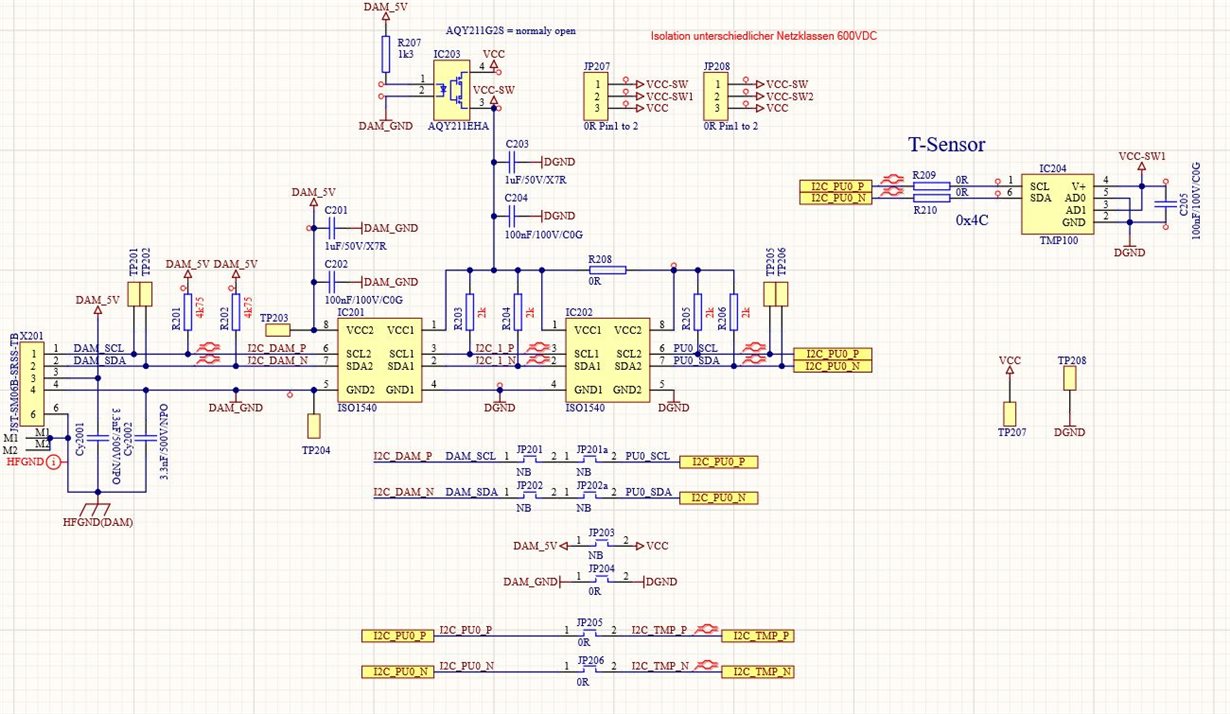Other Parts Discussed in Thread: TCA9517
Dear Sirs,
I have a question about the ISO1540
Can I connect two ISO1540 in series?
I would like to increase the capacitive switching capacity to 400pF for each of the separate IC2 buses
Please refer to the attached circuit diagram.
Two ISO1540 (IC201 and IC202) are connected in series.
(the power signals DAM_5V and VCC correspond to a supply voltage of +5V DC)
The IC203 is used for a reset of the I2C bus.
Many thanks for the help
Axel


